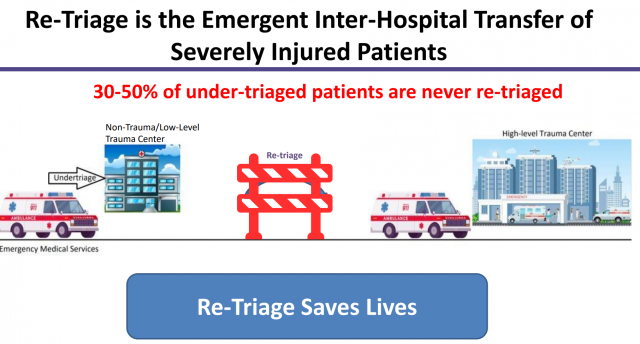Trauma Re-Triage
Background
Time and time again, severely injured trauma patients are under-triaged, where patients with severe trauma injuries are taken to non-trauma and low-level trauma centers and are not properly “re-triaged” to higher levels of care. This is known as under-triage, and it is associated with increased mortality as compared to if the patient were taken directly to a high-level trauma center. These patients face a 30% increased mortality at 48 hours and a 3.8x increased odds of overall mortality.

About the Project
ISQIC is looking to change that percentage with its Trauma Re-Triage Program.
The goal of the program is to establish a trauma network across Illinois and to understand why these re-triage failures occur and what interventions are needed to correct them. The program has three aims:
1) To estimate care of timeliness of clinical care at non-trauma and low-level trauma centers;
2) To map the re-triage system and processes of care from non-trauma centers to high-level trauma centers, leveraging a learning collaborative; and
3) To design and pilot-test a user-centered re-triage intervention to improve re-triage for patients.
Since 2020, the team has built process maps highlighting re-triage processes; identified failures based on key feedback from stakeholders; and led stakeholder sessions at non, low, and high-level trauma centers to determine feasible intervention opportunities. These institutions are uniquely positioned to play a key role in saving lives. As a collaborative, we look forward to the opportunity to replicate this process statewide. This includes the sharing of clinical guidelines and operational workflows that will promote and strengthen linkages between sending and receiving centers. This will improve the care coordination for the severely injured trauma patient.
